It’s been a while since we first saw the Renault Megane RS 250, but the wait for Australian buyers is finally over. Those wanting entry into to French quarter of the über hot hatch club will need to part with $41,990 for the RS 250 Cup, or cough up an extra $5,000 if they want the Cup Trophée model.
The extra cash for the Cup Trophée gets you 19″ alloys, flash Recaro sports seats and a few other bits and pieces like electric folding wing mirrors, plus they have even thrown in some floor mats. Bless. In addition, the Trophée is differentiated from the regular Cup by way of grey bumper inserts (pictured above), as opposed to black, and satin chrome door handles, as opposed to body colour.
Both models come standard with a 184kW (250bhp) 2.0 litre four cylinder, including twin scroll turbo. Peak torque of 340Nm is available from 3000rpm, while 80% of that figure is on tap from just 1900rpm. Fitted with a 6-speed manual box, Renault say you can reach 100km/h in 6.1 seconds.
Back in the day it was thought 200bhp was the theoretical maximum one could put through a front-driver. There are many examples of cars breaking that theory now, of course, but almost all employ some form of trickery to at least give the driver some chance of avoiding a call to the operator of a flat bed truck. The new RS 250 is no different with a standard limited slip diff and independent steering axis front suspension offering what Renault describe as “a more reassuring drive”.
After seeing the RS 250 in static mode at AIMS last month, we were quite impressed with the interior, which has taken huge steps from previous Megane offerings. So long as none of the driving pleasures of the former models have been lost, this new effort should be a crowd favourite.
More pics and Renault Australia’s very detailed press release are all yours after the break.
New Renault Megane Renault Sport 250
As the latest in a long line of sporting Renault cars, the new Mégane Renault Sport 250 stands out through its exhilarating performance and handling, unique, eye-catching styling, bespoke cabin fittings and an extrovert character that will quickly engender a strong and loyal following.
The cocktail of its 184kW (250hp) Euro 5-compliant engine, unmistakable sporting coupé credentials and its highly specified chassis complete with Limited Slip Differential and big Brembo®-supplied brakes, is clear evidence that the new Mégane Renault Sport 250 has been honed to offer an extremely exciting ride.
The new car has been developed in the wake of some extremely focussed sporting Mégane models of the past, not all of which were available in Australia, such as the Mégane F1 Team R26 and Mégane R26.R.
In addition to the comprehensive specification offered in the standard Australia ‘Cup’ model, ultimate enthusiasts have access to a more track-oriented ‘Cup Trophée’ model which adds Renault Sport Recaro Seats, 19-inch alloys, tyre pressure monitor, smart key card, floor mats, satin chrome door handles, electronic folding mirrors, and grey bumper inserts and rear diffuser (Cup has black).
The Mégane Renault Sport 250 Cup is priced from $41,990* while the Cup Trophée versions start from $46,990*. Both versions arrive in Renault Australia dealerships from 1st November 2010.
* Manufacturer’s Retail Price does not include on road charges such as dealer delivery and statutory costs.
The new Mégane Renault Sport 250 in detail
Body design
The dynamic, sweeping lines of the new Mégane Coupé combine with many motorsport-derived details to give the Renault Sport 250 model an even more assertive character, pointing to the promise of exhilarating on-road performance that will reset the benchmark for this segment.
The front bumper incorporates the LED daytime running lights, as well as the splitter, which recalls the low-slung nose of the R28 Formula 1 car.
The explosively sporty nature of this Renault Sport-badged model is further emphasised by its wider wheel-arches to accommodate the 18-inch (or 19-inch Cup Trophée model) alloy wheels, central exhaust tailpipe and rear diffuser.
The exterior mirror housings, the aerodynamic blade incorporated in the front bumper and the rear diffuser are all finished in gloss black, a further sign that New Mégane Renault Sport is not only sporty but also chic and elegant.
The new Mégane Renault Sport 250’s stance is uncompromisingly sporty – a sensation reinforced by its striking launch colour, Sport Yellow – while at the same time exuding a distinct impression of robustness and stability.
Special attention has been paid to quality, too, as illustrated by the design and finish of the 19-inch ‘Steev’ wheels (Cup Trophée) which suggest a cocktail of refinement, advanced technology and speed.
Interior
The cabin carries over the chic, sporty styling of the exterior, and features a dark charcoal trim, which contrasts with the Sport Yellow rev-counter background and steering wheel stitching.
The Yellow Ambience Pack brings further touches of colour in the form of the seatbelts and two-tone grey and yellow upholstery, as well as the door-panel and gear lever knob stitching.
The driving position is unmistakably sporty, but also perfectly comfortable.
The front seat back and cushions feature additional lateral support, while the driver’s seat is fully adjustable (fore/aft adjustment of 240mm and height adjustment of 70mm), including adjustable lumbar support.
Optionally available on the Cup model are heated leather seats complete with electric adjustment and memory function.
Customers specifying the Cup Trophée, who enjoy putting their vehicle through its paces round a circuit, will appreciate the cloth-covered RECARO seats, or optional leather-upholstered RECARO, which are also height and fore/aft-adjustable.
The low seating position is comfortable, and the driver benefits from efficient support, whether driving on the open road or negotiating a racetrack.
The steering wheel, too, is designed to be comfortable and sporty. It is trimmed in full-grain leather and is both height- and reach-adjustable to find the ideal driving position. Its shape and integrated thumb rests ensure perfect grip, while the yellow centre-point marking is a particularly useful feature when taking a sequence of tight corners or when driving on low-grip surfaces.
The aluminium-faced pedals and footrest round off the competition feel of the driving experience.
Quality materials have been employed, while special care has been paid to assembly excellence and to the smaller details, with Renault Sport-badging visible on the grille, tailgate, sills, headrests, rev-counter background and dashboard trim.
Engine
The new Mégane Renault Sport 250 is powered by a new-generation, Euro 5-compliant 2.0-litre 16-valve turbocharged petrol engine, which boasts maximum power of 184kW (250hp) at 5,500rpm and peak torque of 340Nm from 3,000rpm.
The Renault Sport 2.0 T engine’s twin-scroll turbo is exceptionally responsive and is particularly flexible at lows revs, with 80 per cent of maximum torque available from 1,900rpm.
Its broad useful rev band makes it a genuine joy to drive in everyday use, and the pleasure remains all the way up to the rev-limiter whenever it is pushed a little harder. The engine of the new Mégane Renault Sport 250 drives through a six-speed manual gearbox.
Compared with the previous Mégane Renault Sport the engine’s increase in power and torque has notably been achieved thanks to evolution changes to the turbo for an enhanced response at low revs, continuously variable intake valve timing, and revised fuel-injection mapping.
Work has also gone into the acoustics of the Renault Sport 2.0 T engine to produce a telltale sporty pitch audible inside the cabin under acceleration.
With 80 per cent of peak torque available from as low as 1,900rpm, acceleration is smooth and responsive thanks to the twin scroll turbocharger and continuously variable intake valve timing.
To guarantee both performance and reliability, more than 25 per cent of the engine’s components are new compared with the previous 230hp engine, including new intake ports, reinforced reciprocal parts (pistons and conrods), new air/air and water/oil intercoolers, sodium-cooled valves, and piston ring carriers.
The new Mégane Renault Sport 250 drives through a six-speed manual gearbox (PK4), with revised ratios and increased shift precision for an even sportier feel. The new transmission enables the engine’s inherent performance to be exploited, with a 0-100km/h time of 6.1 seconds and the 1,000-metre standing start covered in 25.7 seconds.
The new Mégane Renault Sport 250 returns excellent fuel economy for this level of power, with combined cycle fuel consumption of just 8.7 litres/100km, equivalent to CO2 emissions of 195g/km.
To enable the fastest possible get-aways, the new Mégane Renault Sport 250 is also equipped with a system designed to optimise standing start performance. Known as Power Start, this system functions when the car is at a standstill – with ESP selected – and allows the driver to profit fully from the engine’s acceleration performance without grip being lost.
To ensure lasting performance, Renault Sport Technologies’ development team has put the new Mégane Renault Sport 250 through its paces in a wide variety of situations, from long-distance circuit runs to extreme cold and heat, covering more than 300,000km in testing.
Chassis
The new Mégane Renault Sport 250 features an independent steering axis layout at the front where the suspension and steering functions have been separated to ensure a particularly high standard of handling and traction performance.
The new Mégane Renault Sport 250 comes standard with a limited slip differential for exceptional traction.
The electric power steering features specific, sportier calibration and benefits from the latest improvements seen on the new Renault Mégane aimed at achieving greater precision and even more feedback from the road.
The new Mégane Renault Sport 250 is equipped with ESP which is fully disconnectable in order to enable owners to sample the pleasure of enjoying their car’s full potential round a circuit.
The new Mégane Renault Sport 250 boasts a raft of specific equipment designed to heighten driving enjoyment, including Renault Sport Dynamic Management (which permits three ESP modes) and Renault Sport Monitor (onboard telemetry).
The independent steering axis front suspension (Renault Sport Performance Hub) was first seen on a Renault production car in 2004, with the launch of the previous generation Mégane Renault Sport. This arrangement ensures stable front suspension geometry under hard acceleration or when applying a significant amount of steering lock, cutting torque-steer.
Compared with the first-generation layout, which it supersedes, the new Mégane Renault Sport 250’s front suspension has benefited from significant work into reducing unsprung weight. The pivot, pivot carrier, and lower arm which links the wheel assembly to the engine subframe are made from aluminium, while ball joints are now employed between the pivot and pivot carrier to reduce the forces to which the steering axis is subjected.
For optimal directional precision, the front suspension is attached to a so-called ‘horned’ subframe, a layout which ensures a level of transverse rigidity which is three times superior to that of Mégane II Renault Sport’s front suspension.
Meanwhile, the damper housing and shaft diameters have been uprated on the new Mégane Renault Sport 250 compared with Mégane Coupé. This has doubled the stiffness of the strut and optimises maintenance of the front wheels’ geometry under load.
The programmed-deflection rear torsion beam uses a new closed-profile beam, which ensures the same level of stiffness for less weight.
Renault Sport Technologies’ innovative independent steering axis front suspension was first introduced in 2004 and is engineered to overcome the drawbacks commonly associated with powerful front-wheel-drive cars subjected to high forces, such as self-steering input through tight corners and poor straight-line stability induced by torque steer.
The steering axis of the new Mégane Renault Sport 250’s front suspension has been completely separated from the damper, unlike on a MacPherson-type arrangement where the steering axis is attached to the ball-joint of the lower arm and the upper damper mounting. The axis around which the wheel rotates is defined by the pivoting link between the hub carrier and pivot carrier. This has reduced the hub level offset (i.e. the distance between the centre of the wheel and the intersection of its rotation and steering axes) to 40mm, compared with 56mm in the case of the MacPherson-type layout used on New Mégane Coupé.
The front suspension geometry is consequently less sensitive to forces and torque applied to the driven wheels around their steering axis under hard accelerating and under heavy braking. The pivot carrier is attached to the lower rectangular arm via an anti-rotation tie-rod.
The standard set up of the new Mégane Renault Sport 250 for Australia is the ‘Cup’ set up as used in European models. This is one step up from the standard Sport setting.
The Cup chassis is aimed at enthusiasts who enjoy sporty driving and fans of track days, since its specific settings truly come into their own when the car is pushed that little bit harder. Compared with the (European model) Sport chassis, anti-roll stiffness on the Australian Cup Model has been increased by 13 percent thanks to a bigger-diameter anti-roll bar (24.2 mm).
The dampers are specific, too, while axis stiffness has been uprated by 35 and 38 per cent at the front and rear respectively compared with the Sport chassis. Anti-roll stiffness at the rear has been increased by 7 percent compared with the Sport chassis.
The overall anti-roll stiffness of the Cup chassis marks an improvement of 15 percent over the Sport chassis. Equipped with a limited slip differential (LSD), the Mégane Renault Sport 250 chassis delivers genuine competition-type performance. The LSD ensures optimum traction at all times; whatever the conditions, however much grip is available, whatever the diving style and whatever the type of corner. The combination of a limited slip differential and independent steering axis front suspension minimizes the effects of torque steer and permits the driver to profit fully from the extra traction for a more reassuring drive.
The limited slip differential also ensures greater stability under braking. By kicking in immediately, it pushes back the threshold when the ASR traction control intervenes under hard acceleration or when the ESP cuts in when turning into corners, thereby freeing the car’s full braking potential.
Improved turn-in performance also means that the driver is able reaccelerate harder and sooner.
In short, in addition to improving the efficient transmission of power to the road, and thereby enhancing performance, the limited slip differential delivers progressive, reassuring handling which is appreciable whatever the driving style.
Lateral cornering stability has been improved to obtain a remarkable specific angle of roll, namely 0.28°/m/s 2 for the Cup chassis.
The new Mégane Renault Sport 250 comes with red painted brake callipers and grooved brake discs, as standard. The wheels are 18-inch ‘Ax-l’ alloys fitted with Michelin Pilot Sport 2 (235/40 R18 Y). For the Cup Trophée models, there are 19-inch ‘Steev’ alloy wheels shod with Continental Sport Contact 5 Performance (CSC5P) (235/35 R19 Y).
High-performance cars call for high-performance braking systems that deliver both bite and resistance to fade. The new Mégane Renault Sport 250 benefits from exceptional stopping power thanks to its four-pot Brembo callipers and 340mm diameter, grooved, vented discs at the front. Braking performance is further enhanced by an 11-inch servo.
The rear uses 290mm-diameter grooved discs.
The new Mégane Renault Sport 250’s electric power steering features the same changes introduced on the new Mégane, although its calibration has been adapted to suit the new model’s sportier driving style. The system delivers more precise feedback, with a progressive increase in turning effort into corners and enhanced comfort through turns. Its steering ratio of 14.75:1 is closer than that of the former-generation version.
Limited slip differential
The mechanical limited slip differential comprises a knurled helical gear, and satellite and sun gears with parallel axes. The limited slip function is obtained by the system’s mechanical efficiency. When wheelspin occurs, the differential’s internal architecture generates friction on the surfaces of the sun gears. This results in a proportion of engine torque being transmitted to the wheel, which benefits from the most grip.
The chief characteristic of this type of limited slip differential is the fact that the transfer rate is determined by the use of three friction rings (selected for their friction coefficient), which are located between the sun gears and differential casing. The transfer rate can be modified by using friction rings of different coefficients.
Since the faces of the rings, which intervene under acceleration, are different to those that intervene under braking, it is possible to achieve differentiated transfer rates. In the case of the new Mégane Renault Sport 250, the transfer rate is 35 per cent, while its TBR (Torque Bias Ratio: the nominal ratio between the torque of the wheel which benefits from the most grip and the wheel which benefits from the least grip) is 2.3:1.
GKN Driveline supplies the limited slip differential.
Equipment
The new Mégane Renault Sport 250 comes standard with a raft of technological equipment including automatic dual-zone climate control with three modes (Soft/Auto/Fast), hands-free card with automatic door locking as the card-holder walks away from the vehicle, 3D Sound by Arkamys audio system, with standard RCA connection or optional Plug & Music connectivity (USB, jack) and an integrated satellite navigation system.
The analogue instruments of the new Mégane Renault Sport 250 are specific to the model and are another feature, which provides a visible tie-in with the world of motor sport.
In addition to the warning light, which recommends the ideal moment to change gear, an audible warning also tells the driver when the rev-limiter is about to cut in.
A new feature on the new Mégane Renault Sport 250 is the Renault Sport Dynamic Management system, which allows the driver to choose the degree of electronic aid he or she wants in different situations:
- In the default mode when the engine is fired up, the ESP, ASR traction control and emergency brake assist are all activated. The system intervenes as soon as it senses that the car is on the verge of sliding. The pedal mapping ensures smooth acceleration, making this mode ideally suited to everyday use.
- In ‘Sport’ mode, activated by a short press on the ESP button, ESP and ASR are still active, but they intervene at a later point and allow the car to slide to a certain extent, so long as the skid doesn’t exceed a given threshold. The pedal mapping is modified to permit swifter engine response
- The final and most extreme mode is “offâ€. This allows unfettered enjoyment of the engine’s performance and is specifically suited to driving at racetracks. This mode is activated by a longer push on the ESP button. The electronic stability programme is fully disconnected, while the pedal mapping is modified to permit swifter engine response
When the latter two modes are selected, the warning lights ‘ESP Sport’ or ‘ESP Off’ are illuminated on the dashboard.
Another new feature for the new Mégane Renault Sport 250’s class is the Renault Sport Monitor, an advanced tool that provides the driver with real-time data. The system takes its inspiration directly from technology employed in motor sport and, until now, seen only on a small number of prestige road cars.
The Renault Sport Monitor is an electronic system, which enables driving data to be collected via an array of sensors. Drivers can scroll through the system’s different functions using the steering wheel remote controls, and the following information is shown on the main dashboard display:
- Main engine functions such as turbo pressure and oil temperature, and brakes
- Real-time engine performance data (torque, power)
- Transverse and longitudinal acceleration (‘GG’ display)
- Stopwatch, with memory function
- Performance data, with automatic memorisation of best 400-metre standing start and 0-100km/h times
The Renault Sport Monitor also enables the driver to modify the pedal mapping. A choice of five settings is available with the ‘Sport’ mode selected (‘linear’, ‘normal’, ‘snow’, ‘sport’ and ‘extreme’) in order to adapt the car’s acceleration characteristics to the conditions or to the driver’s needs.
Safety
Renault considers safety to be a priority and a domain in which the brand is known to excel. Renault uses the findings of LAB (Accident Analysis, Biomechanics and Human Behaviour Laboratory of PSA Peugeot-Citroën and Renault) to design vehicles that are both safe and adapted to real-world driving conditions. The new Mégane Renault Sport 250 naturally benefits from Renault’s expertise in this field.
A raft of equipment is included to help drivers anticipate or avoid risk via the adoption of seatbelt warning lights for all five seats, a tyre pressure monitoring system, automatic headlamp and windscreen activation, cruise control with speed limiter, ESP with understeer control, and emergency brake assist.
The new Mégane Renault Sport 250’s outstanding passive safety performance has been achieved thanks to the same systems as those fitted to the new Mégane Hatch.
The programmed deformation of the body structure allows it to absorb impact energy to protect the cabin and its occupants. The materials employed – including high, very high and very, very high elastic limit steels – have been selected to absorb and dissipate as much kinetic energy as possible. Controlled deformation ensures that occupants are subjected to lower deceleration forces and this, coupled with the third-generation Renault System for Restraint and Protection (SRP3), guarantees an extremely high level of protection.
On sale dates
The Mégane Renault Sport 250 Cup is priced from $41,990* while the Cup Trophée versions start from $46,990*.
Both versions arrive in Renault Australia dealerships from 1st November 2010. *
Manufacturer’s Retail Price does not include on road charges such as dealer delivery and statutory costs.
About Renault Sport
Renault has been a major player on the international motor sport scene for many years.
The R8 Gordini, the Super 5 GT Turbo, Clio Williams and, more recently, Clio Renault Sport, Mégane F1 Team R26 and Mégane R26.R have all stood out as emblematic ambassadors for the brand on racetracks and rally stages around the world. The current range of production Renault Sport-badged models benefits extensively from Renault Sport Technologies’ long experience of competition and from the Renault group’s manufacturing expertise.
With more than 21,000 units sold in some 30 countries since its 2004 launch, the previous generation Mégane Renault Sport was a resounding success. In addition to topping its class in France, the previous Mégane Renault Sport was one of the most competitive hot hatches around thanks to refinements such as the more track-focussed Cup chassis, as well as the later release of the radically lightened R26.R version.
Both the Mégane F1 Team R26 and Mégane R26.R were acclaimed for their high-performance engines and chassis efficiency. They were each voted ‘Sporting Car of the Year’ by readers of the French magazine ‘Echappement’ in 2007 and 2008 respectively. Meanwhile, the previous generation Mégane R26.R – which still holds the lap record for its class round Germany’s 21km Nürburgring Nordschliefe circuit – was named ‘Car of the Year’ by ‘Evo’ magazine and stands out as the benchmark hot hatch of its class.
Renault Sport Technologies is a subsidiary of the Renault group. Its overall mission includes three principal areas of activity:
- The design, development, manufacture and sale of production sporting models
- The build and sale of competition cars for rallying and circuit racing use (Renault Formula 2.0, Renault Formula 3.5, Clio Cup, Clio Renault Sport R3, Mégane Trophy)
- The organisation of international single-make championships (World Series by Renault, Clio R3 Trophies) and Renault Sport Experience leisure activities (notably Enthusiast Days and driving tuition)
Renault’s Motorsport History
1899: victory for Louis Renault in the Paris-Ostend road race
1900: victory for Louis Renault in the Paris-Toulouse-Paris road race
1901: Renault monopolizes the top-three places in the Paris-Bordeaux road race
1906: victory in motor racing’s first ever Grand Prix (Grand Prix de l’ACF)
1971: Formula Renault 2.0 created
1977: Renault makes Formula 1 debut
1978: the A442b wins the Le Mans 24 Hours
1982: the Marreau brothers win the Paris-Dakar rally in a Renault 20
1986: launch of the Renault Super 5 GT Turbo
1989: launch of the Renault 19 16V
1993: rally debut of Renault Clio Maxi and launch of Renault Clio Williams
1995: launch of Renault Sport Spider and creation of the Renault Spider Trophy (circuit racing) 1996: rally debut of Renault Maxi Mégane
1999: creation of the Renault Clio V6 Trophy (circuit racing)
2000: launch of Clio II Renault Sport and Clio V6 Renault Sport
2002: rally debut of Renault Clio Super 1600
2003: creation of Formula Renault V6 (circuit racing)
2004: launch of Mégane II Renault Sport
2005: creation of the Renault Mégane Trophy and Formula Renault 3.5 (circuit racing)
2005 and 2006: Renault wins the Formula 1 Constructors’ world title
2006: launch of Clio III Renault Sport
2007: creation of the Renault Clio Cup (circuit racing) and launch of Renault Clio R3 / R3 Maxi (rallying)
2007: Mégane Renault Sport F1 Team R26 voted ‘Sporting Car of the Year’ by readers of the French magazine Echappement
2008: launch of Twingo II Renault Sport
2008: Mégane Renault Sport R26.R voted ‘Sporting Car of the Year’ by readers of the French magazine ‘Echappement’, and voted ‘Car of the Year’ by the British magazine ‘Evo’
2009: creation of the New Renault Mégane Trophy (circuit racing)
Renault Sport UK voted “Manufacturer of the Year†by Top Gear.
2010: launch of the new Mégane Renault Sport 250 in Australia
Game on for new Renault Sport
The new Mégane Renault Sport 250 features in the latest release of Electronic Arts’ ‘Need for Speed’ video game series: ‘Need for Speed Shift’.
Following the successful inclusion of New Mégane Coupé in ‘Need for Speed Undercover’, Renault and Electronic Arts have continued their association with the appearance of the new Mégane Renault Sport 250 in ‘Need for Speed Shift’, the latest addition to the NFS series.
Need for Speed’s development team were won over by the new car’s looks and performance credentials, and featured it in the game’s line-up of 70-car line-up which that includes the most legendary models of the past three-and-a-half decades.
Renault’s experts and developers from Electronic Arts worked hand-in-hand for almost a year to make the car’s role in the game as lifelike as possible.
Need for Speed Shift delivers driving sensations on a par with those felt behind the wheel of the cars themselves, and its unique gameplay features provide players with an unparalleled experience as they embark on a tour of the world’s most legendary circuits.
Created 15 years ago, Need for Speed evolves from year-on-year, enabling players to enjoy the thrills of motor racing with increasing realism. More than 100 million copies of Need for Speed have been sold, making it the biggest motor racing video game franchise ever thanks to its combination of prestigious cars and incomparable technical qualities and graphics. The game is developed and published by Electronic Arts, the world’s leading video game publisher, whose products constantly strive to push out the envelope when it comes to innovation, player immersion and intensity.
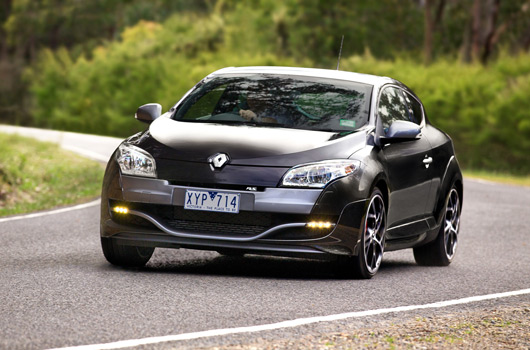
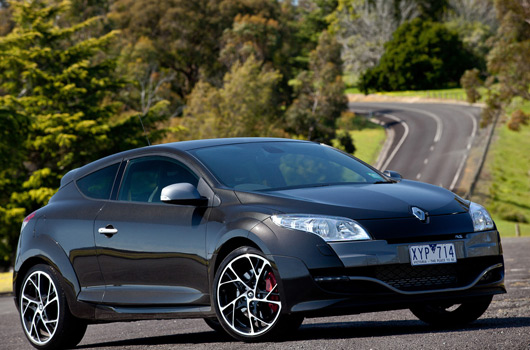
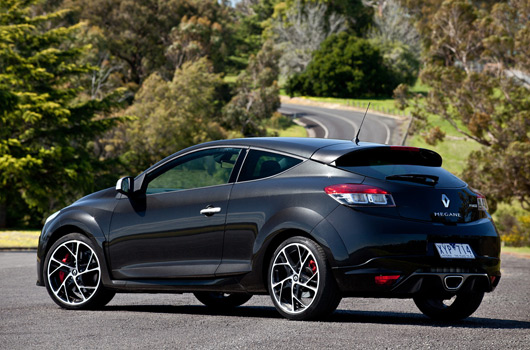
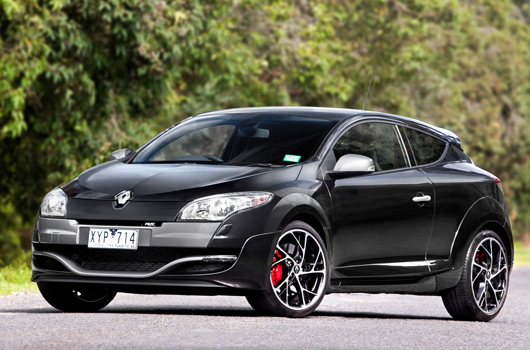
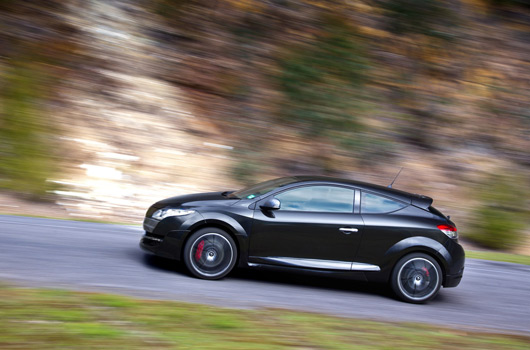
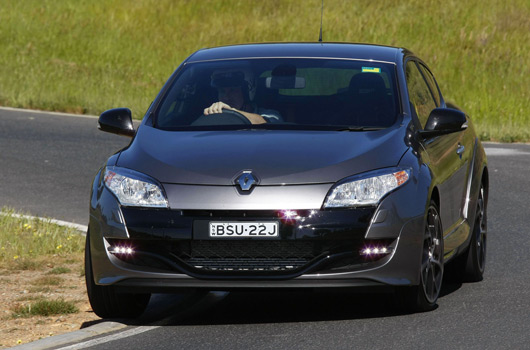
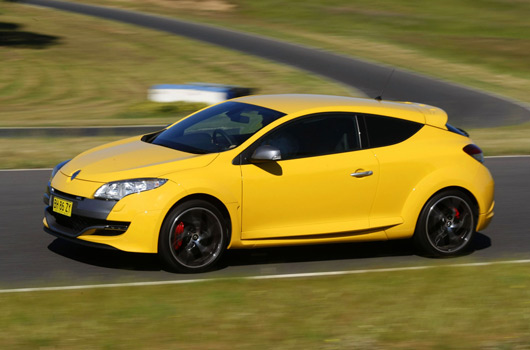
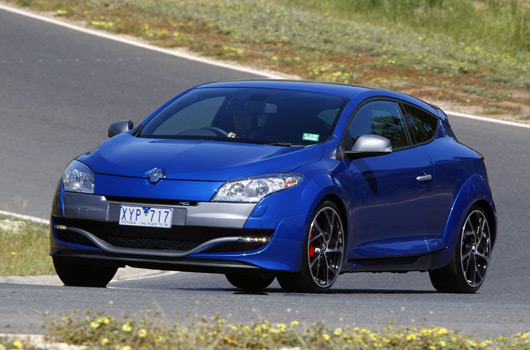
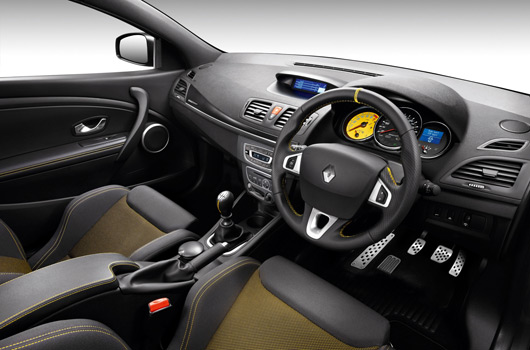
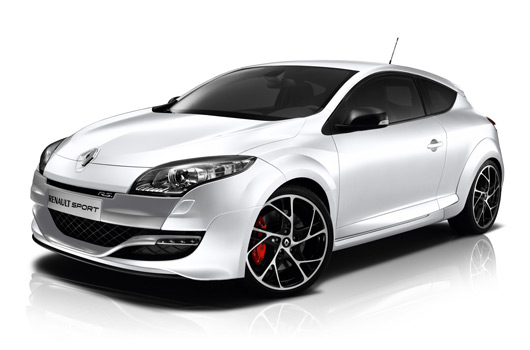
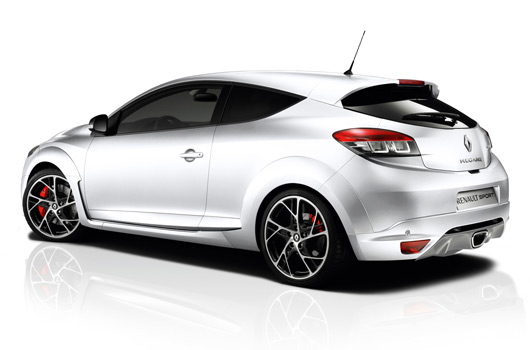
16 replies on “Renault Megane RS 250 – Australian pricing & specs”
I’m surprised VW let Renault land this one in OZ. Surely it will cannibalise sales of the GTI.
Great car, and sharp pricing to boot.
Amazing car! Would love to borrow one of these
Revdes, unless I’ve completely missed something, I’m not sure how VW would stop Renault bringing it in?
Very interesting looking car, but WTF is going on with those wheels? They are woeful.
@MickyD, I think that was a tongue-in-cheek stab at VW’s refusal to bring in the Scirocco!
You’re right about the wheels, they are horrific.
Fortunately the 18″ wheels are much nicer and you can have them with both versions
I sat in the one at AIMS. Nice, but I wouldn’t get the Recaros myself.That would also lose the um _unusual_ wheels.
Definitely top of my shopping list when I get a new car (which is looking like 2012 ATM )
[…] the road ready Renault Megane RS 250? Then you’ll love this N4 rally-spec version. With 265hp (197kW) and 470Nm of torque on offer […]
this thing looks awesome.. some people made a bit of noise relating to the rims, i think they look flash!! love the body shape, wanna get the trophie version, or qt least take a long goos look at it..
mu only gripes are these, front lights look a little bit wonky and the yellow stitching isnt nice, unless u get the yellow one lol
Drove this yesterday. It was a cracker! Nice solid and direct steering, no under/torque-steer and very quick. We drove the trophee version with the wicked Recaro seats, 6sp manual and mechanical LSD. VERY good…really well priced too…
Though….it is a face only a mother could love! No satnav option either…and those wheels….wtf? The 18’s look quite good, though…I’d vote blue trophee with black 18s…
BTW – if you option the leather, all the yellow stitching goes away….
And….isn’t Renault partnered with Nissan? – ie. what does VAG have to do with it?
BTW – they talk a lot about the front suspension, but the torsion beam rear suspension seems a bit unsophisticated compared to the competition…
[…] engine supply deal Renault has with Red Bull Racing. The interest comes from preparing a handful of Megane RS 250 hot hatches for circuit racing and then handing the keys to a few racing drivers and saying […]
I’d seriously consider it if it was rear wheeel drive. It doesnt have t be as crazy as the awsome clio v6so but please, if your going to built a real sport car that can appreciate that power……………..
[…] from that it’s pretty much usual Megane RS250 fare, including the same 184kW/340Nm engine from the regular range. A few more ponies would have […]
[…] In coupé form they have stated clearly they want the VXR to tackle the Volkswagen Scirocco R and Renault Megane RS 250 head […]
[…] driver Rick Kelly and Kiwi Drifter Mike Wihddett out on Melbourne’s streets in a couple of Renault Megane RS 250s to offer a few free taxi […]
[…] Megane RS 250 was launched in Australia in late 2010 and to find the extra 15 horsepower for the RS 265 Renault […]